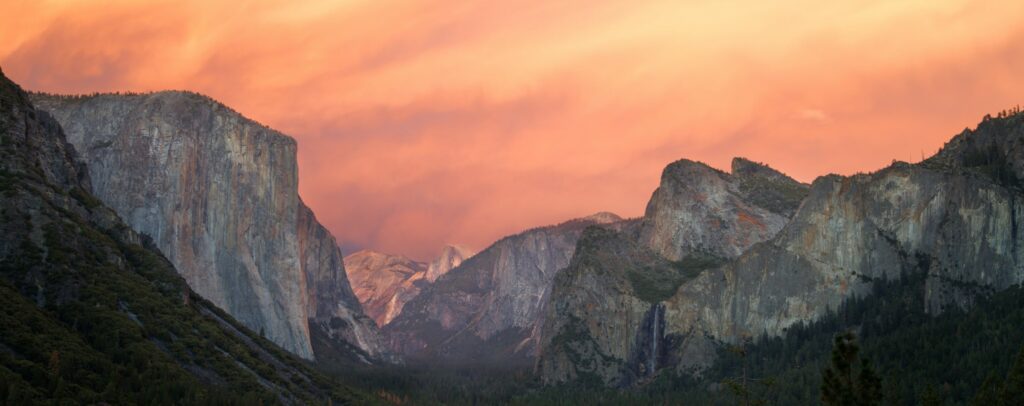About The Region: North America
Service members and veterans seldom experience the full grandeur that North America has to offer because a majority of duty stations are in the United States and it’s territories. What they don’t know is that as the third largest continent in the world, North America is home to all 5 major biomes (aquatic, grassland, forest, desert, and tundra) it includes the largest non-continental island, national parks larger than nations and one of the top tourist cities in the world – New York.
North America can be divided into five physical regions: the mountainous west, the Great Plains, the Canadian Shield, the varied eastern region, and the Caribbean. Mexico and Central America’s western coast are connected to the mountainous west, while its lowlands and coastal plains extend into the eastern region.
For clarity, we separated regions in cardinal direction and by USA time zones. Central America and The Caribbean are highlighted in their own section here.
When to Go
As with any destination, deciding when to visit depends on your interests and activities, but North America is exceptionally wonderful all year round! As one part of the continent begins the plunge into winter, another part of the continent is still doused in sun. There is no shortage in vacation opportunities in such a large continent!
The Northern continent including Alaska, Canada and Greenland are characterized by cold, dry, snowy winters and warmer summers, while some parts experience rainfall with longer winters. The Western United States of the continent varies in climate with areas that may be hot and dry in the desert, rainy during autumn or very snowy during winter. The Eastern sub-region maintains humidity throughout the summers and winters while Mexico in The Southern sub-region is very hot with little or extreme rainfall in some parts.
Greenland, Canada and most of the United States lie in the Northern hemisphere and have four distinct seasons:
Spring – The season of rebirth! Flora and fauna fanatics can bask in Texas bluebonnets or walk amongst cherry blossoms in D.C. Wildflower season launches across North America, while skiers and snowboarders continue to hit the slopes. March, April and May are also good months to explore national parks before the onslaught of summer heat and crowds.
Summer – School’s over and sunny days are endless. From June, July and August, tourists can gawk at the whales and wildlife that come to say hello in Greenland or jam to one of the many electric music festivals hosted throughout North America. This is the busiest season of the year, so prepare for high prices and crowds, especially in Canada where hiking becomes the number one pass-time amogst beautiful weather.
Autumn – For foliage lovers, September, October, November are the best months to see fall in all its finery. Bears become one with locals before hibernation and travelers flock to hot springs to warm up as temperatures cool down. October was rated the best month to visit national parks in the U.S. and Canada, so after a visit to the pumpkin patches and orchards, head on over to see the Sequoias and Joshua Trees. Fall is an ideal season for hunting in the USA, check out seasonal information here!
Winter – Grab your parka and embrace the chill! December, January, February are amazing months to experience spectacular winter views. From Yosemite’s mesmerizing firefall descending El Capitan and the Northern Lights in Alaska, to dog sledding in Greenland and Christmas extravaganzas in New York. Temperatures may sink, but there is still so much to do this season.
Mexico has more constant temperatures throughout the year and experiences Wet season from May to October and the Dry season from November to April.
Scroll to the bottom for more unmissable travel opportunities in North America.
Travel PrerequisiteS
The DoD Foreign Clearance Guide outlines all the requirements you must complete before traveling. The requirements vary by combatant command and country and they change continually based on current threats.
Typical prerequisites for traveling around North America include (U.S.A, Canada, Greenland)
- Approved liberty (This process varies greatly from unit to unit, be sure to check local guidelines)
- Completed itinerary (Not always required, but is helpful to provide in case of emergency)
Typical prerequisites for traveling to Mexico include
- The DoD Foreign Clearance Guide may suggest completion of additional travel prerequisites that may include the following:
- Level 1 Anti-Terrorism Awareness Training via JKO
- SERE 100.2 via JKO
- Travel Tracker Individual Anti-terrorism Plan (TT/IATP)
- Country Clearance via Aircraft and Personnel Automated Clearance System (APACS)
- Theater Clearance via APACS
- Special Area Clearance
- Isolated Personnel Report training
- SCI Brief via local command
- Detailed Itinerary
Military Installations and Historical Sites
Many military installations are in the United States and are listed here, but there are currently no permanent bases in the rest of North America. Knowing the location of these installations are incredibly helpful when traveling as they offer outdoor recreational services, equipment, travel guidance and discounts. Lodging on bases are usually cheaper and you can connect with fellow troops in the area!
Throughout the United States the National Park Service honorably preserves battlefields, military parks, and historic sites to commemorate and honor the service of American veterans. Here, you can find a list of destinations from the Civil War to World War II.
Travel Considerations
With so much going on in the world, even more so in The United States, we may feel discouraged from exploring this land and discovering what lies beyond the compounds of a base. Nevertheless, travel in North America is safe and service members and veterans can easily join the millions of other visitors exploring this region.
Like many other continents in the world, there are some countries or cities that are legitimately unsafe for travelers. It is always recommended that at the time of planning any trip, that you check the current political climate or general state of affairs in the country you are thinking of visiting.
The trick is simply knowing the do’s and don’ts both geographically and logistically. Here are some valuable safety tips for travel in North America.
- Vaccinations are recommended and required for some parts of this region. A detailed list can be found here from the World Health Organization.
- Check The Department of State – Bureau of Consular Affairs travel advisories regarding the safety of every country.
- Stay out of the busy downtown areas in cities and the industrial or business areas after dark.
- Have a battle buddy, it’s safest to travel with others.
- Be prepared for extreme weather! Always have water and appropriate clothing for extreme cold.
- Plan your hikes. People get lost every year from improper planning and navigation issues.
- Never drink the tap water in Mexico, bring a filtered water bottle.
- Toilet paper goes in the trash in Mexico.
- Always bring cash, many small towns or rural areas do not accept card.
- Explore beyond the touristy spots, Atlas Obscura is wonderful for finding hidden gems.
- Learn the language – Not everyone in North America speaks English. Spanish, French, Greenlandic are important to learn for specific countries.
- Public transportation in the USA isn’t that great, so always research your best travel routes and modes of travel, or car rental services.
- You must be 25 years or older to rent a car in the USA.
- Last minute travel can be very expensive, so book ahead and prepare for unexpected cancellations.
- Book all activities in advance! Festivals, concerts, wilderness passes, etc., usually sell out immediately, so book before arranging travel to ensure whatever activities your interested in are available.









